Most of us who visit the opal fields do not have the expertise or knowledge to actually mine for opal. A lot of us though, do have a desire to find a piece of opal. There is a way that this desire can become reality, and that is by noodling and specking for opals. Noodling is sifting through the dumps left by the miners and specking is walking slowly along staring at the ground looking for any signs of colour.
When the original miners hunted for opal they were only after the higher quality opal as this was the only opal they could sell. They often discarded the lesser quality opal and small pieces and even occasionally some better quality opal that slipped through. This would then be brought to the surface and dumped on the mullock heaps.
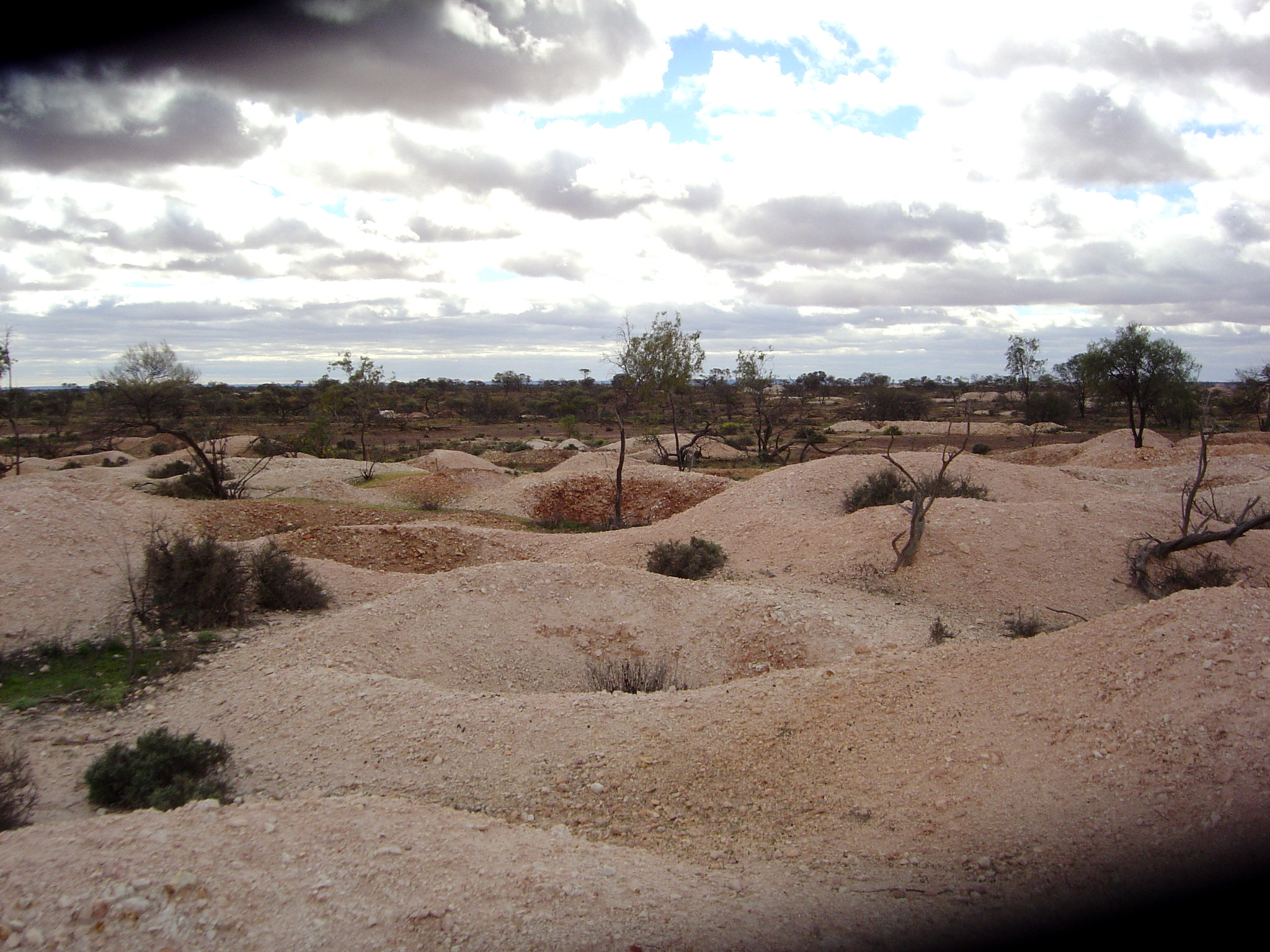
This is what an opal field looks like. There are mullock heaps everywhere and there could be opal in any of the heaps.
They often used to take any likely piece of opal back to their camps and snip off the edges to expose any colour within the stone. These pieces were left where they fell and it is often worthwhile sieving around any old campfires as this is often where they did the snipping. I have found some nice small pieces around old campfire sites at Duck Creek , in Queensland.
In later times when machines were used, small pieces of opal could be missed by the miners and sucked out of the mine onto the mullock heaps.
When we first started to regularly visit the opal fields, especially Andamooka, Lightning Ridge and White Cliffs there were many mullock heaps where you could spend a few hours carefully sieving or just inspecting the surface and have a chance of finding some opal. Unfortunately in recent years miners have realised that there was still plenty of opal in the heaps and have picked them up in front end loaders and either put the material into cement mixers and mixed the material with water, discarding the slurry until they could find any opal or have put the heaps through a noodling machine under ultra violet light and picked out the opal. This has meant that there is much less chance of finding opal by noodling now but there is still a chance if you are patient.
At Coober Pedy, in 2012, I checked out an area where heaps had been removed and by chance found a lovely small red opal that had been left after the front end loader had removed the heap. That same year, at Mintabie I searched for several hours on the old mine sites and found a few pieces of colour which had been exposed by rain. They weren't valuable but they were worth the effort.
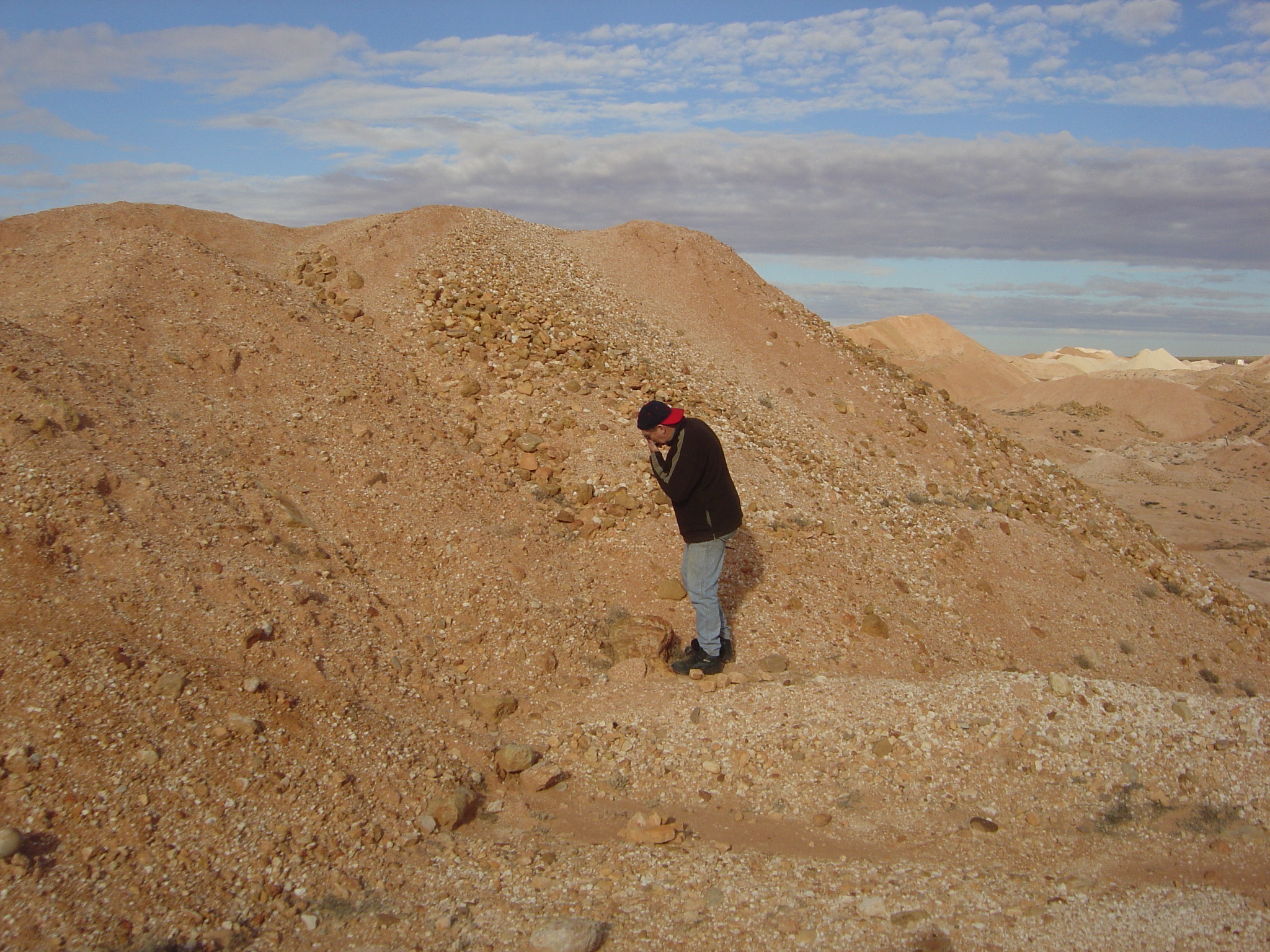
This is a picture of me specking at Andamooka. It can sometimes be very daunting seeing vast heaps of spoil from the opal mines and knowing that the chances of finding any opal in such vast heaps is very low. But it is still fun to look. Remember that miners have actually dug all this material from the ground and many would have found nothing also. They paid a lot of money to do all this digging but I can speck for free.
Many people spend a lot of money buying gold detectors and spend long hours scouring the old gold fields for tiny nuggets worth a few dollars. If you go noodling for opal you only need a few basic tools. A small trowel or scraper, a bag to place the opal in and a good hat is all you need together with a lot of patience. You can, of course take along a sieve but I find it is just as easy to sit down on a heap and just scrape away at the surface with shallow scrapes and look carefully where you have scraped. If you have a small container of water with you this can help also as you can wet any piece of rock you think might contain opal as this helps to see the colour in the stone. It is a time consuming and often frustrating job but there is always the chance you may find something valuable.
I have seen some mullock heaps, on working mines, where people have the miner's permission to noodle while he is working the mine. These people, somehow learning the miner is finding opal, swarm the surface looking for opal. All of a sudden there is a loud noise and a heap of opal bearing clay is discharged from the suction hose above the mullock heap and people scatter but return as soon as possible to scour the newly mined material. It is amazing to watch as these noodlers are covered in white dust but don't seem to mind. Also there are usually no arguments even though people are working shoulder to shoulder. You do have to obtain the permission of the miner to go onto these working heaps and also to go onto any working claim. This is very important as you can be in serious trouble if you do not get permission.
At Grawin, trucks used to deposit waste from their mines onto a large heap where noodlers were always waiting. While the material was being dumped the noodlers would be jockeying for positions to search for that elusive piece of opal.
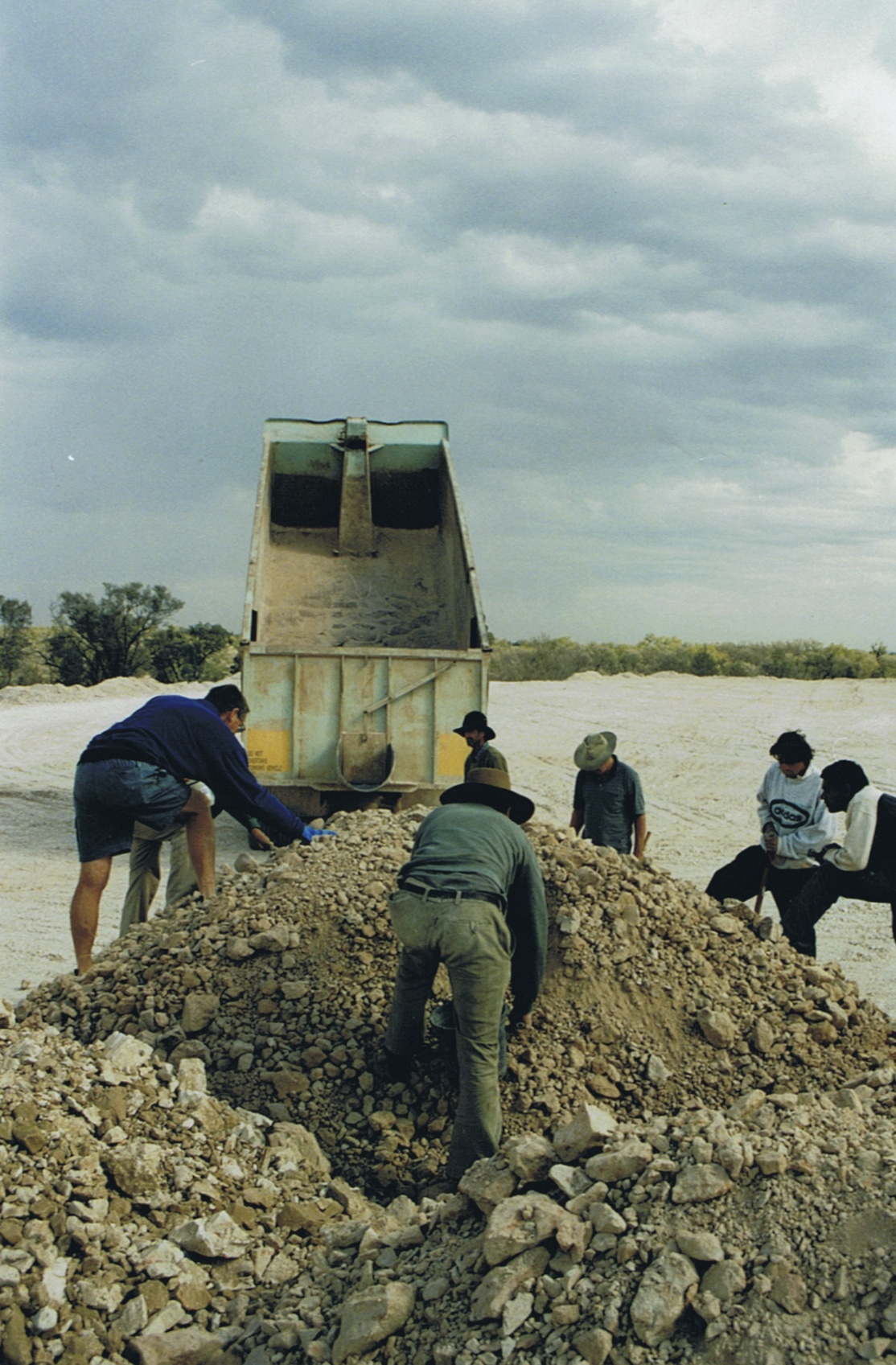
That's me in the photograph joining in. The locals knew which mines were "on opal" and only bothered to search through the material from these mines. Unfortunately this practice was stopped as officialdom thought it was too dangerous and the last I heard you can only noodle the dumps when a whole heap has been completed. Of course you can then only inspect the surface of the dump and so much opal has been missed.
Specking is a good way to get some exercise as well as perhaps picking up a nice stone. Creeks or areas where water has flowed in storms are good places to speck. At Andamooka last year I picked up a large piece of opal potch with a crystal colour bar in it in the creek bed heading out of town. These waterways are usually dry but flow with great intensity when it rains and can wash light opal pieces a long way. The water can also erode the creek banks, washing out any opal pieces that may have lain there for years.
Another area to look is along any dirt roads in the opal towns. The roads are made from material from the opal mullock heaps and often contain small pieces of opal. This is a good place to look soon after heavy rain as the dust will have been washed off the surface of any opal. Do wait until it dries off a bit though as opal dirt is full of clay and this gets very sticky and difficult to walk on. Again, at Andamooka, I picked up some nice small pieces of matrix opal on the road surface near where I was staying. The next two photographs show these pieces after they were treated and polished.
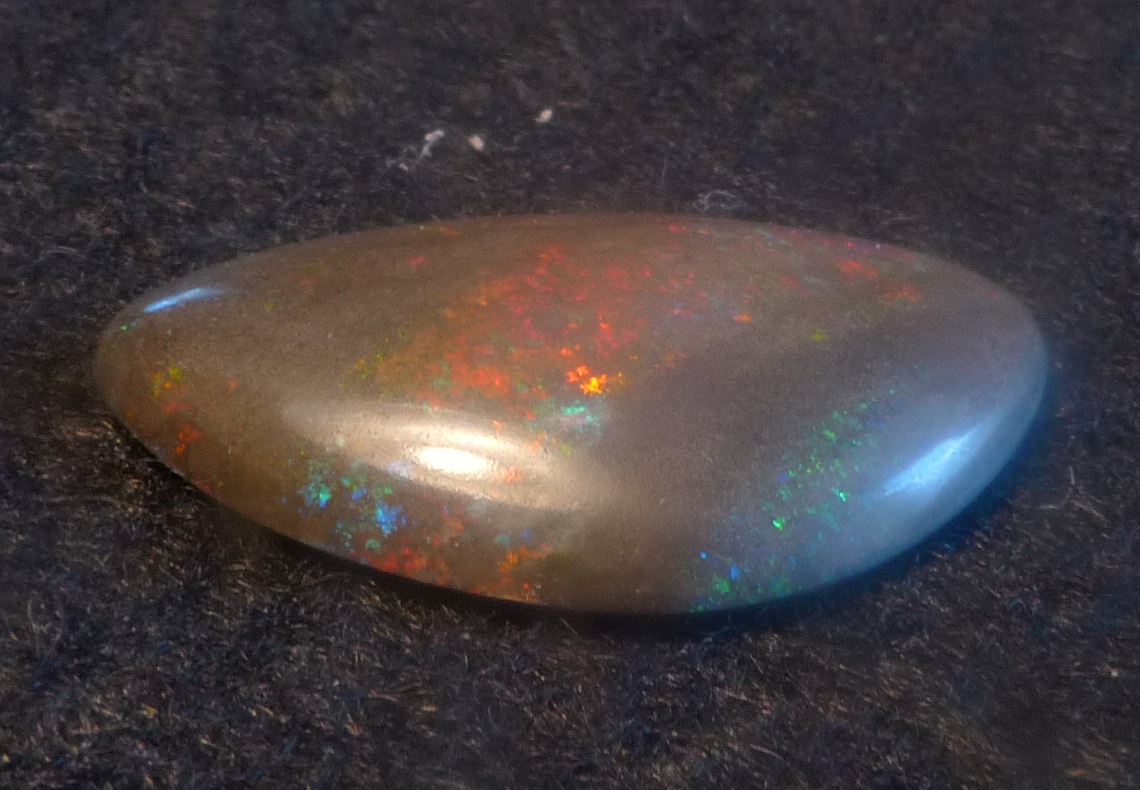
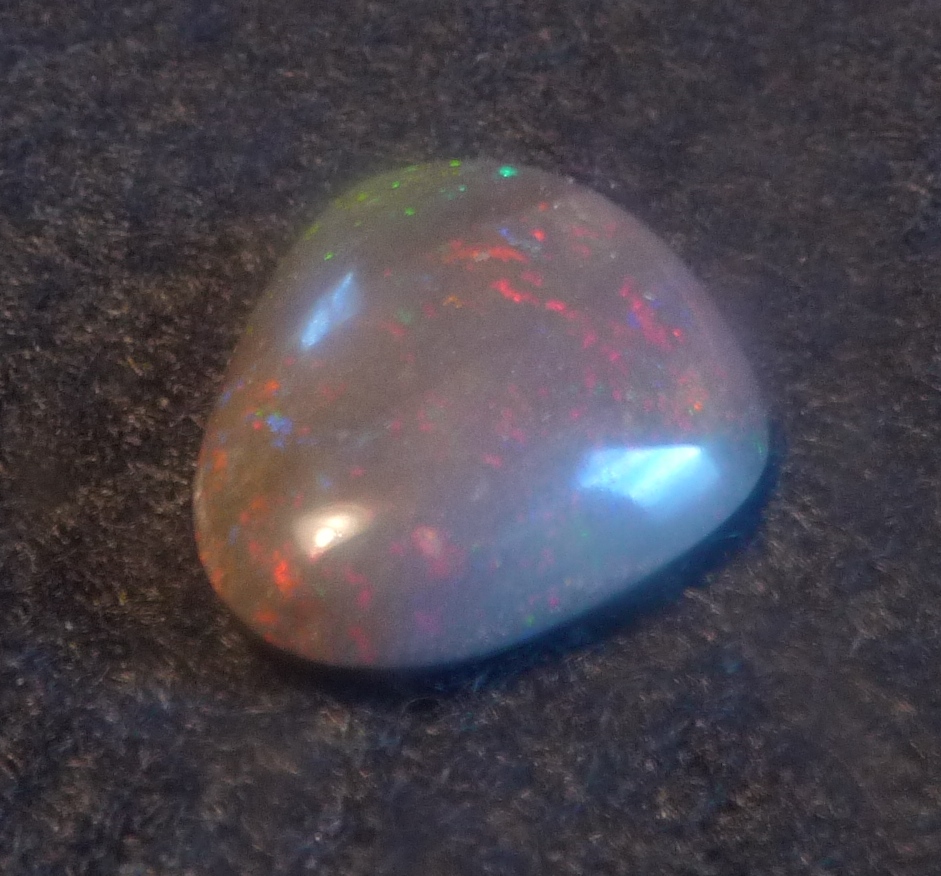
These two pieces were quite large and similar in colour even though they were found at different locations on the roadway.
While I have never found anything of great value I have heard stories of speckers picking up opal worth thousands of dollars just by watching the ground as they walked along. One other tip is to do the specking in the morning with the sun behind you. This seems to allow you to see any colour a lot better as the light is not as intense . It is also usually cooler than the afternoons as opal areas are in desert areas where it can get very hot.
Noodling and specking is a great way to spend your time in the opal fields and who knows what you find.
Happy noodling,
Johno